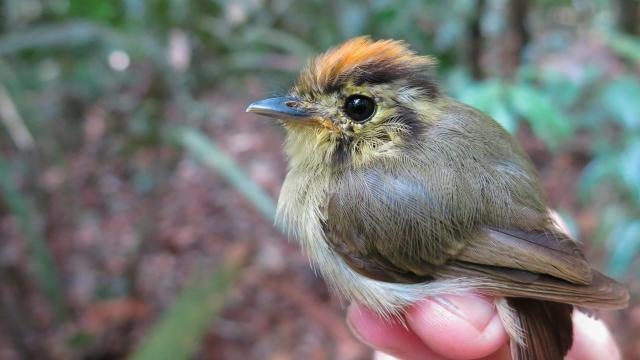Four decades of data about bird species in remote parts of the Amazon rainforest indicate the animals’ body sizes and wing lengths have changed. These changes — decreases in total body mass and increases in wingspan — correspond with a 40-year trend of increasingly hot and dry conditions during the rainforest’s drier season.
The trend was highlighted by a team of ecologists that collected data on over 15,000 birds from nearly 80 different species that they captured, analysed, and released over those four decades. Their findings are published today in Science Advances.
“The broad result is that climate is changing at our study site,” and “at the same time, the morphology of birds exposed to those conditions is changing,” said Vitek Jirinec, an ecologist at Louisiana State University and lead author of the study, in an email to Gizmodo.
“Variation in mass, wing, and mass:wing is also linked to temperature and rainfall in the shorter-term (seasonal) interval,” Jirinec added. “That means more evidence that bird body size and shape is related to temperature and rainfall. If these change over time, it makes sense to see the morphological shifts we report. As for how exactly mass is related to climate, we are not sure.”
One hypothesis proposes that animal body sizes get smaller when the weather gets warmer. Another is that climate change has reduced the amount of food available to these birds. In either case, it appears the climate is driving the reduction in bird mass, with the birds in total losing about 2% of their body mass per decade on average.
“These birds don’t vary that much in size. They are fairly fine-tuned, so when everyone in the population is a couple of grams smaller, it’s significant,” said co-author Philip Stouffer, a conservation biologist at LSU, in a university press release.
Because the birds’ wingspans tended to increase as their mass decreased, the researchers suspect the changes may help reduce the wing load, making them more efficient in flight. But they don’t know for sure. “Are the changes we’re witnessing related to flight? Are the changes evolution (genetic changes), as opposed to plasticity (changes in phenotype without DNA alterations)? Is it really related to heat exchange? There’s much more work to be done,” said Jirinek.
Here, we show just a few of the thousands of birds examined by the research team. Their work shows how long-term changes to the climate affect not only the numbers and behaviours of animals but even their shapes and sizes.
Collared puffbird
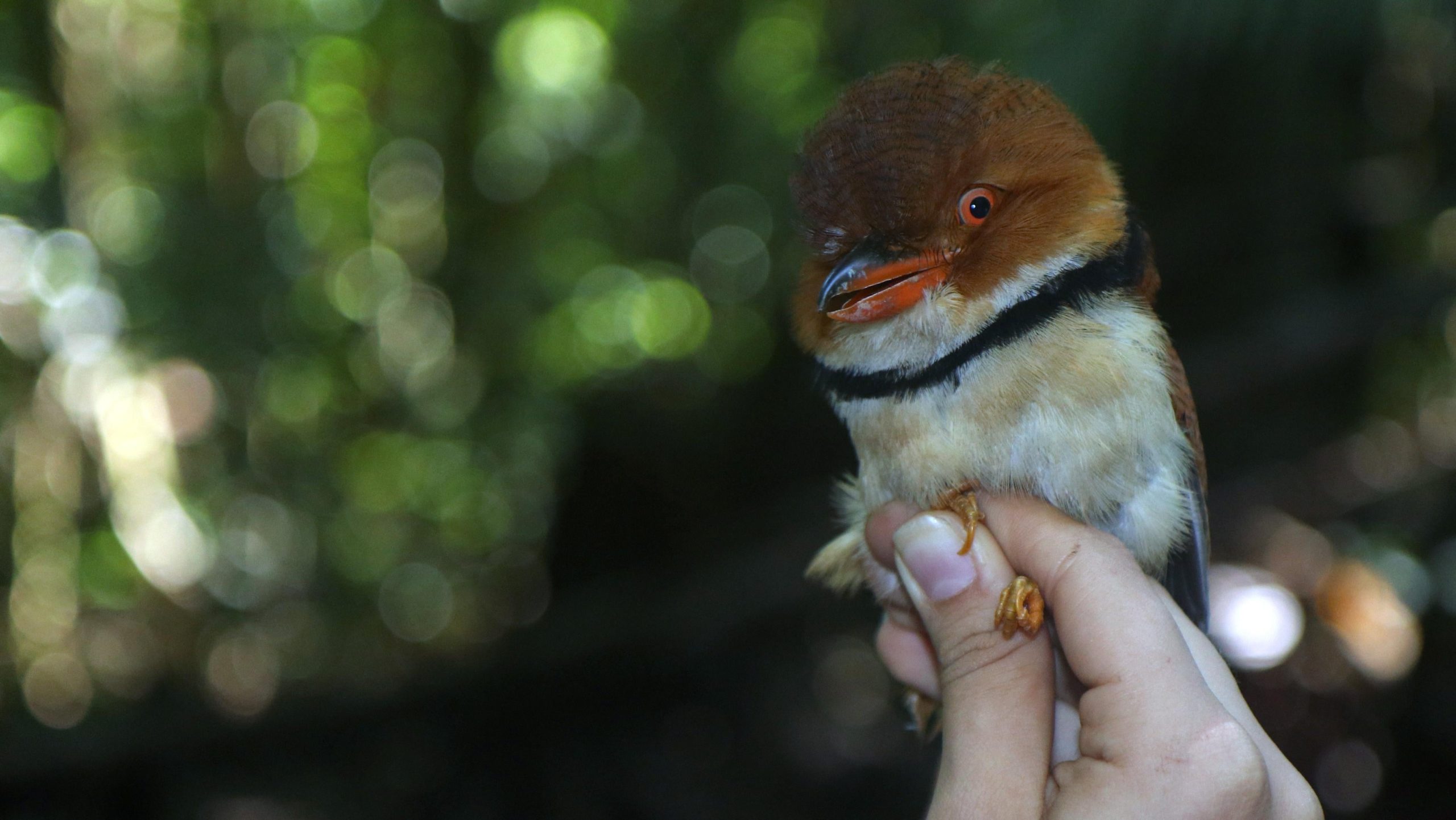
True to its name, the collared puffbird has a black band of feathers around its neck and an oddly bulbous head. The bird is, frankly, a little comical, but its situation is not: The average puffbird body has decreased in mass by nearly 4% since 1980, according to the team’s results.
McConnell’s flycatcher
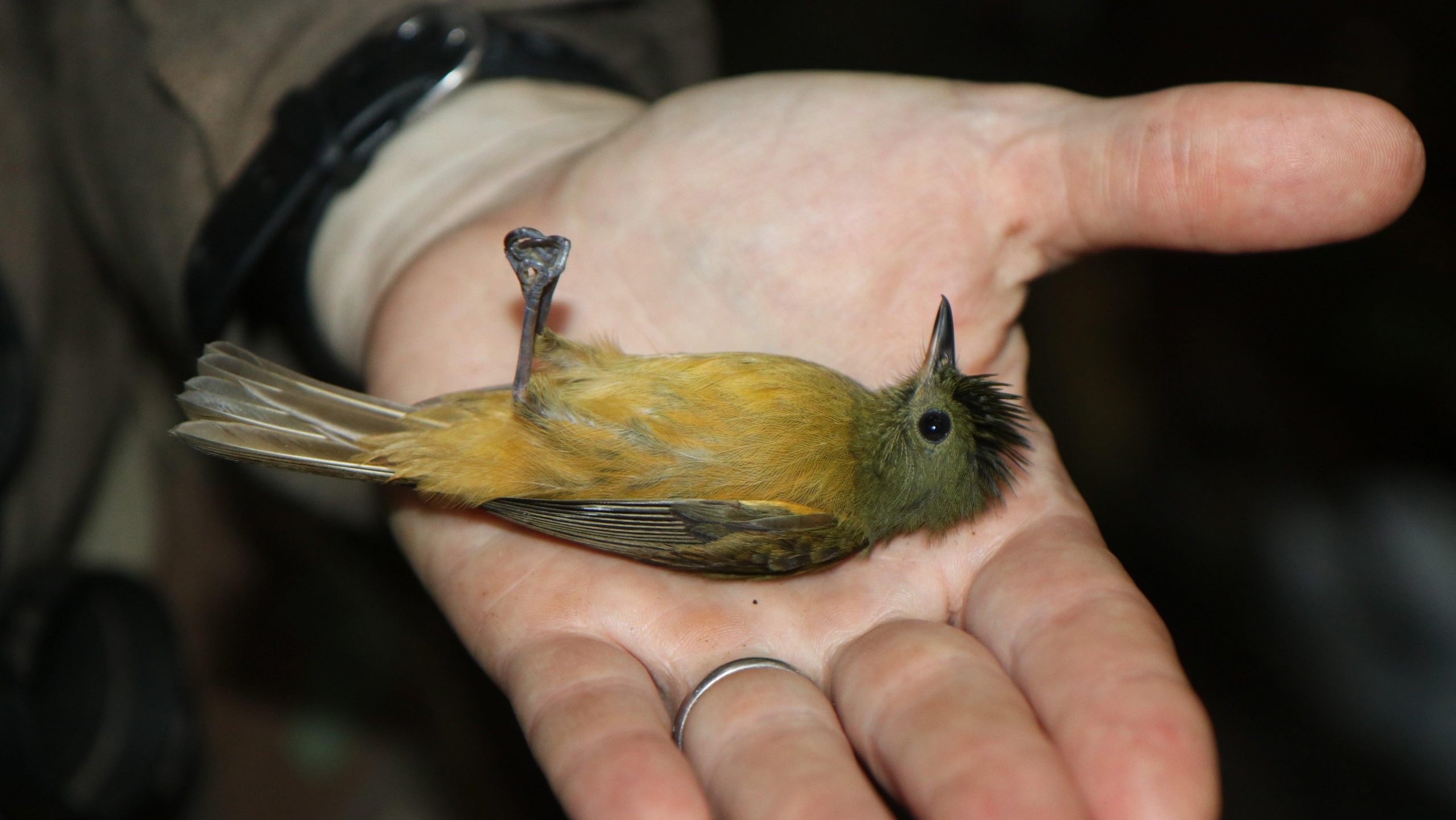
The McConnell’s flycatcher is found in several countries in South America. The petite bird lives throughout the understory of the Amazon but is not often seen (its green-and-yellow plumage makes a great camouflage). Like many of the other birds the team studied, flycatcher populations remain robust, a reminder that climate change doesn’t always mean immediate harm to a population’s numbers — sometimes, it can mean changes to animal morphology.
Rufous-capped antthrush

Once the team caught the birds (using a large mesh net), they identified them, marked them, measured their wing length and body mass, and then released them. Here, a fufous-capped antthrush’s wing is studied by one of the scientists. Its average wing size has increased by about 2%, to about 3.29 inches, based on a sample of over 200 birds. Meanwhile, its average mass has gone down by over 3%.
White-crowned manakin
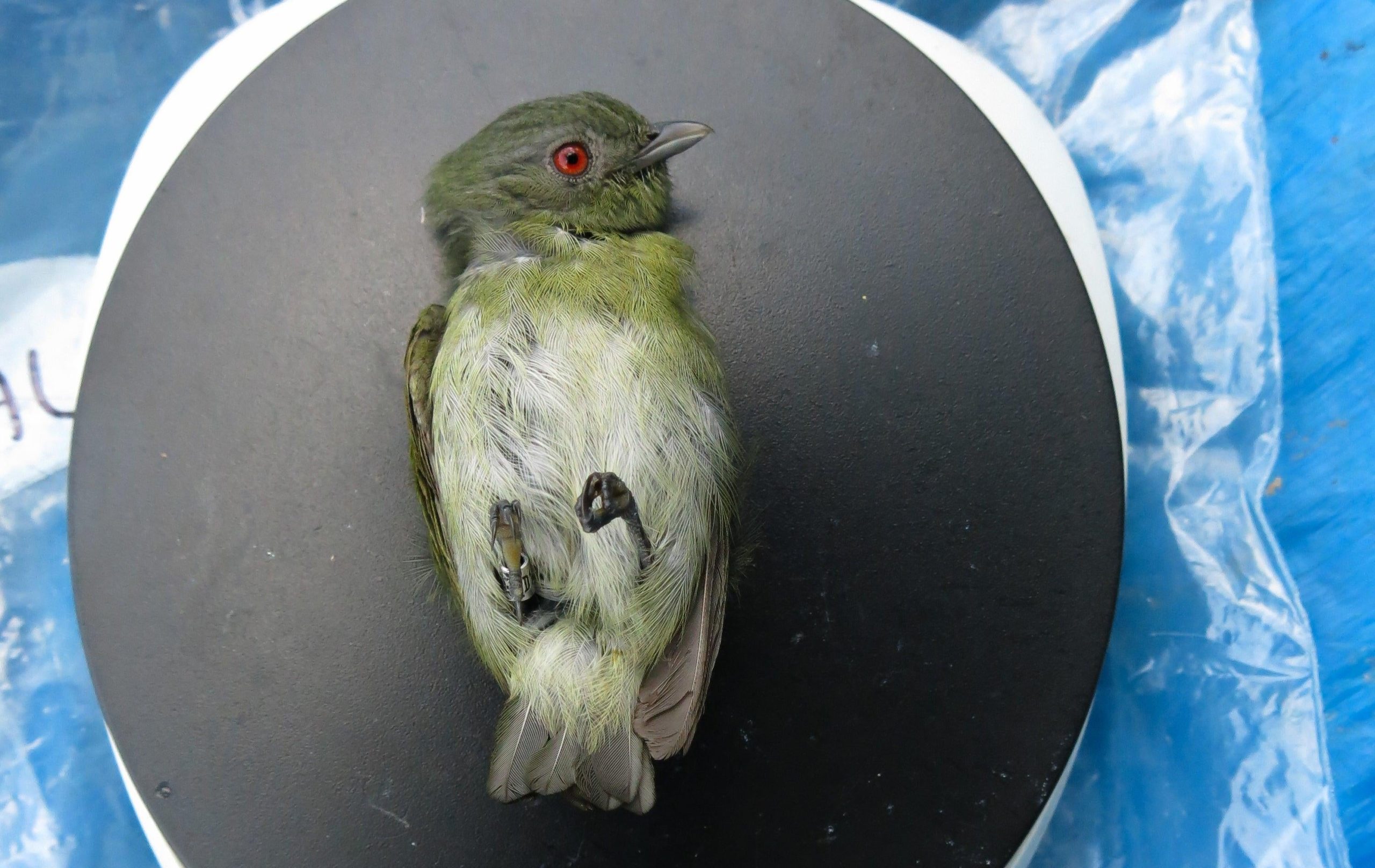
Female white-crowned manakins, like the one pictured above, do not look anything like their name suggests. The name refers to the male’s plumage, which is all black except for a hemispheric tuft of white on the dome of their head. The average mass of these birds has plummeted, according to the team’s study, with a decrease of 4.35% in the last 40 years. Like other birds, its wingspan grew, with a 0.8% increase in wing length.
Dusty-throated antshrike
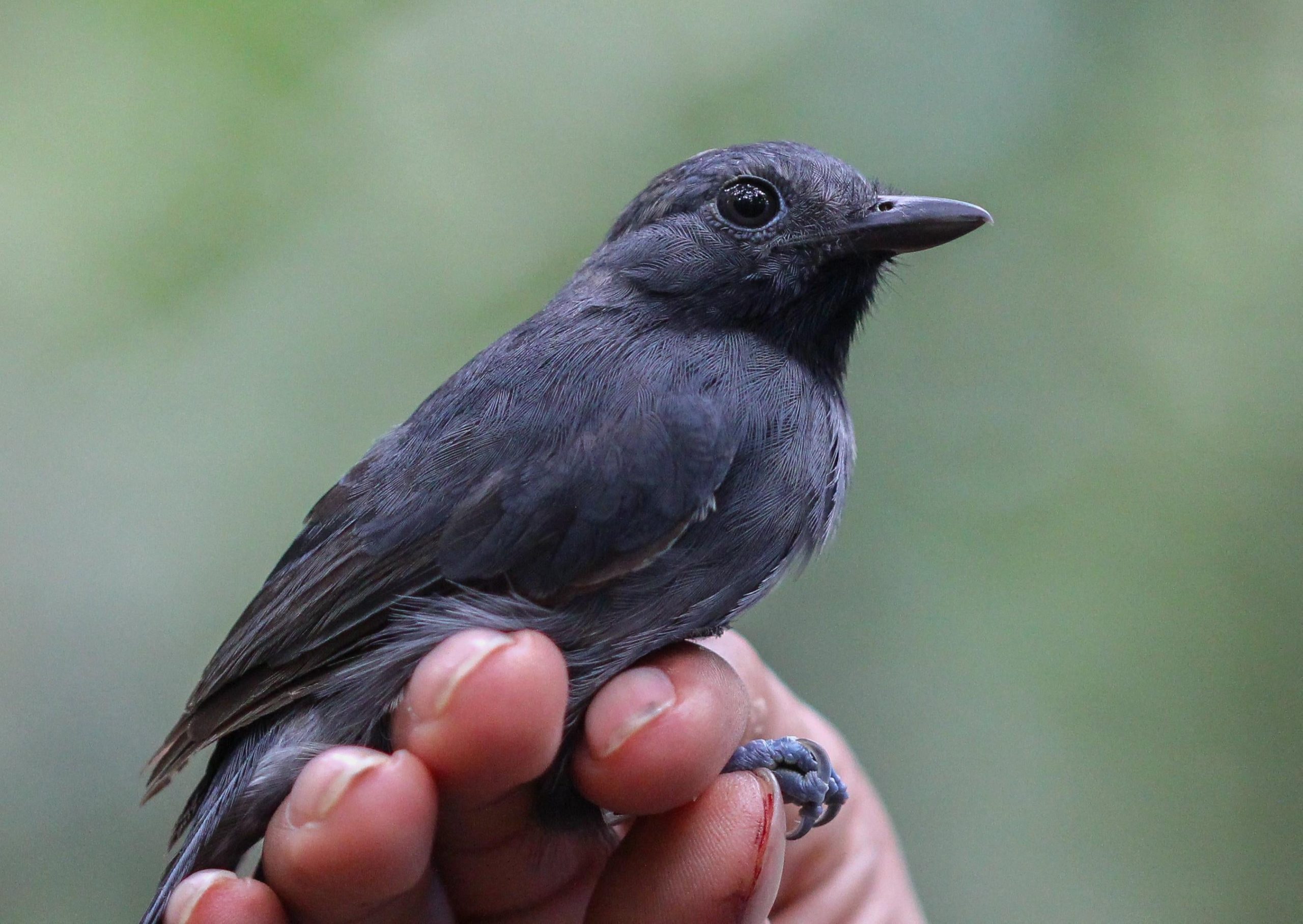
The dusky-throated antshrike is common in western Brazil, Colombia, Ecuador, and Bolivia. It’s an understory bird, meaning it dwells in the lower reaches of the rainforest, and, as its name suggests, loves a good insect for a meal. From over 500 specimens measured in the last 40 years, the team determined that the birds’ average mass has decreased by a whopping 6.36%, while wing length has increased by 1.62%. The mass-to-wing ratio reduced by over 10%, one of the largest reductions among the surveyed birds.
Grey antwren

Grey antwrens are another insect-loving bird that is shrinking. The birds’ diminishment is another sign that being labelled as “Least Concern” by the IUCN doesn’t tell the full story for any species. Besides, at the rate the Amazon is being cut and burned down, that listing may not stay that way for long.
Brown-bellied stipplethroat
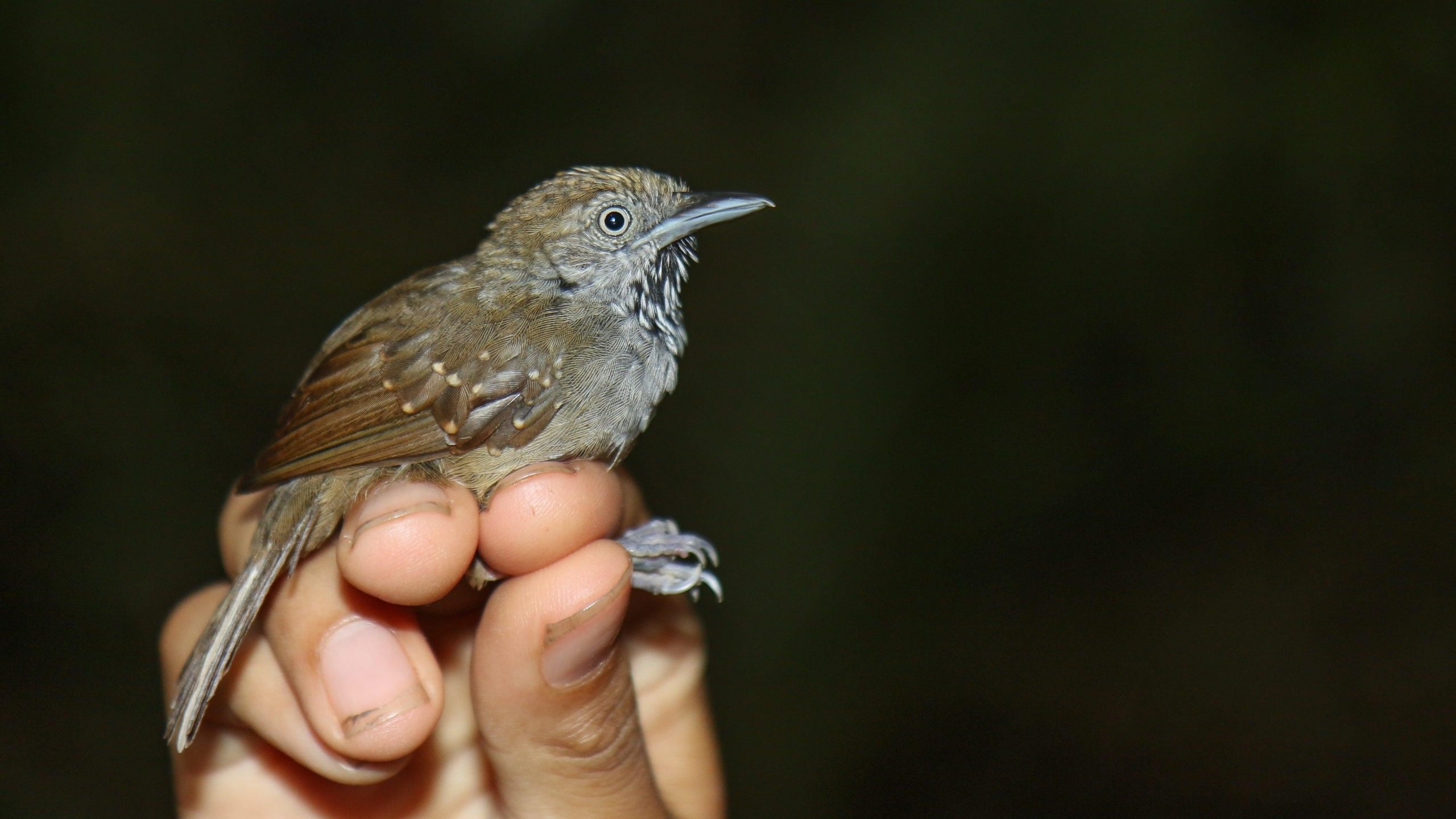
This bird looks just as scared as anyone about the effects of climate change. It’s a brown-bellied stipplethroat, and the average body mass of this species has dropped nearly 6% in the last 40 years. At the same time, as is the case with many of the surveyed birds, its wing length increased. The team will continue to work on the connection between these factors in the years ahead, trying to pin down the complex processes that have led to these changes.
